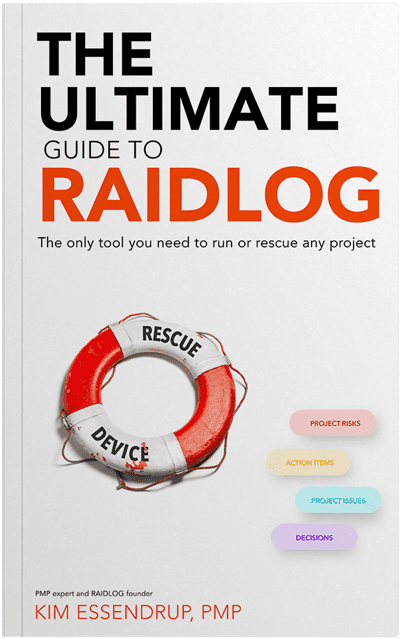There are several options for building and sharing your RAID log: spreadsheet files, online spreadsheet sharing hosts like Google Sheets or Microsoft online, or one of a handful of online applications which let you effectively manage a RAID log, like RAIDLOG.com. But don’t get hung up on which application you use. Jump in and start doing it!
When evaluating options, you may get tempted to break up your RAID log and use different apps – maybe an online task management app for Action Items, and maybe you have different apps or documents where you could manage Risks, Issues or Decisions. You need to find what works best for you and your team, but generally, you will have better results if you can keep core RAID items (Risks, Issues, Actions and Decisions) in one place where you can manage them together. Task switching inherently disrupts the flow of work and forces you to lose out on the simplicity and efficiency that makes a RAID log so effective.
Tip: Switching between apps disrupts the flow of work and reduces efficiency, so it’s best to keep all your RAID log items together in one place
Spreadsheets
The most common hosting method for a RAID log is a simple spreadsheet file. Most everyone who can use a computer can use a spreadsheet, so a Microsoft Excel file has long been the default format for RAID logs. The challenge with a file based solution is making your RAID accessible to others. For this reason, a file based RAID is usually best for small projects or highly secure or dynamic projects where you need tight control over your RAID. This approach also works when you are just starting out and haven’t had time yet to figure out a long term hosting solution.
Online: Google Sheets, Microsoft Online
One of the best options for hosting your RAID log is an online file sharing service like Google Sheets, Microsoft Online or other spreadsheet hosting software. This is much more efficient than using a spreadsheet file on your computer because these services store data online where it is always up to date and always accessible. You can also manage permissions to some extent, allowing some team members to edit your RAID and others to only view it. Plus, these services can sometimes track versions, giving you the ability to roll back changes if needed.
Purpose-built Project Management Tools
There are also purpose-built applications for managing projects. These tools can be pretty advanced, giving you an online tool to manage your project schedules, empowering teams with automation, fine-grained access management, reporting and analytics. Unfortunately, many of these tools do a mediocre job of RAID management, and they usually require a significant investment.
When it comes to selecting a platform for hosting your RAID log, keep in mind this advice:
- Keep it simple. You should spend more time using your RAID log than trying to make your RAID log tooling work
- Keep it accessible. You should be able to share the document to whom you want, and control who can access it.
- Keep it secure. Your organization probably has information security policies regarding project data. Ensure that you understand those policies and follow them.
If you are ready to move past a simple spreadsheet but haven’t decided on another solution, check out RAIDLOG.com for an alternative.
